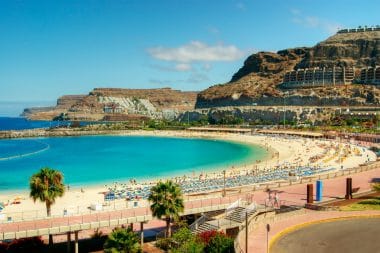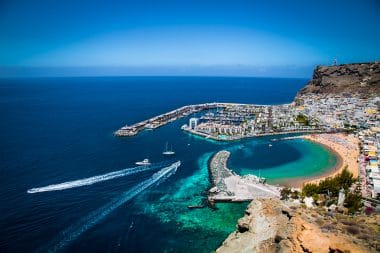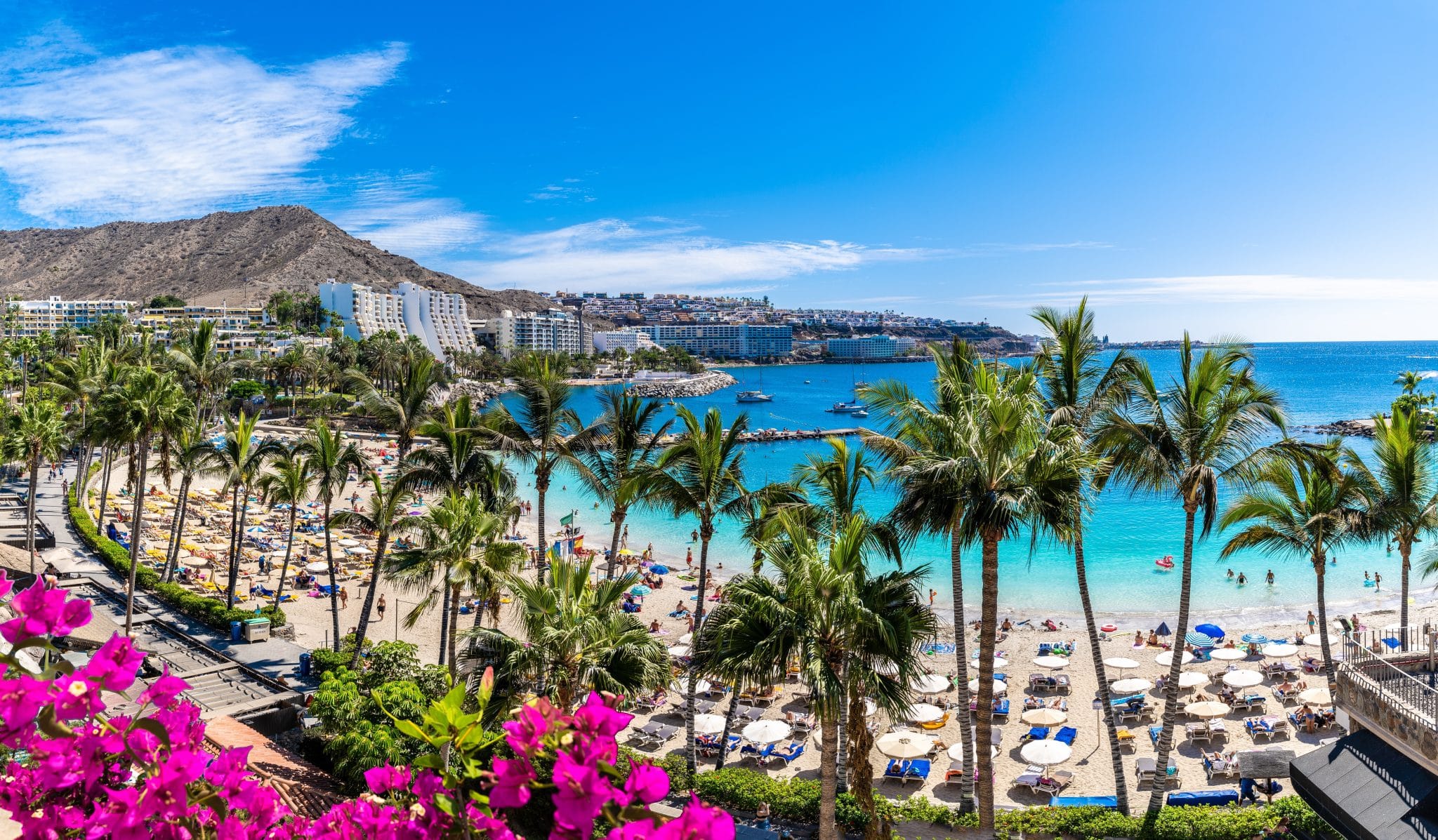Warm weather, sun, 60 kilometres of beaches, green pine forests, breathtaking dunes and numerous small towns and villages with lots of culture make Gran Canaria one of the most popular travel destinations. The Canary Island has many facets and offers the right offer for every holidaymaker. You can read here which sights, towns and activities you should not miss.
The most beautiful beaches in Gran Canaria
If you are looking for a beach and beach holiday, you should opt for accommodation in the Canary Islands , which are located directly on one of the beautiful beaches. Whether natural, with a beach promenade, tourist or for the whole family – Gran Canaria offers the right beach for everyone.
Playa de Amadores

The Bay of Romantics is an almost circular bay that goes shallow into the water and is well protected from the waves. In the evening you can enjoy the most beautiful sunsets here. There is also a children’s playground and water park right next door, so it certainly won’t be boring.
Playa de las Canteras
Those who want to combine beach holidays and city trips should definitely consider Playa de las Canteras, which is located on the west coast of the capital Las Palmas. The 4-kilometre-long beach offers wonderful swimming opportunities, numerous surf schools and a promenade with restaurants and cafés.
Playa de Maspalomas
Maspalomas is one of the most popular holiday resorts on the island due to its breathtaking dune landscapes. The 6km long sandy beach offers numerous bathing opportunities with sun loungers and parasols for hire, bistros, a beach promenade, as well as camel rides through the dunes. To the east is also the landmark of Gran Canaria, the Faro de Maspalomas lighthouse.
The most popular leisure activities
Gran Canaria offers not only relaxed beach holidays, but also exciting and diverse leisure activities, such as surfing, diving, hiking, cycling, sailing and much more. The Cruz de Tejede pass is a good starting point for a hiking tour and mountain bikers have a variety of routes to explore in the volcanic mountains and forests for every level. The range of water sports on offer in Gran Canaria is huge, as its location in the middle of the Atlantic Ocean offers the best conditions for this. For diving, the bay of El Cabron is known as an insider tip.
Culinary delights in Gran Canaria
The Canary Island is known for a wide variety of typical delicacies from Spanish, Latin American and African cuisine, which should not be missed. The basis for this is fish, vegetables and fruit. Typical appetizers include tapas in various variations and regional fish dishes include caldo de pescado (=fish soup), as well as cherne al cilantro en escabeche (= wreckfish with coriander in hot sauce).
A few last insider tips
The breathtaking Poema del Mar Aquarium offers the ideal change from everyday beach life and is one of the highlights on Gran Canaria. For those who like Wild West adventures, we can recommend the Sioux City Amusement Park. Other unique activities in Gran Canaria include whale watching, submarine tours, the Elder Museum of Science and Technology, as well as the 27-hectare botanical garden, Jardín Canario.
General information about Gran Canaria

Gran Canaria is one of the seven main islands of the Canary Islands that belong to Spain. It is located in the Atlantic Ocean, southwest of Morocco and northwest of Western Sahara. The capital of the island is Las Palmas de Gran Canaria.
Climate
The climate in Gran Canaria is subtropical, which means that there are mild temperatures all year round. The island is known for its balanced climate, which is often described as “eternal spring”. The average temperatures vary between 18 °C in winter and 26 °C in summer.
Geography and nature
Gran Canaria is geologically diverse and offers an impressive landscape that ranges from sandy beaches to high mountains. The highest point is the Pico de las Nieves at 1,949 meters. The island is also known for its diverse flora and fauna, including the unique laurel forests and desert vegetation to the south.
Sights
- Roque Nublo: An iconic rock monolith that is considered one of the symbols of the island.
- Dunas de Maspalomas: An extensive dune area in the south of the island, known for its unique landscape.
- Cueva Pintada: An archaeological museum and park in Gáldar that displays the prehistoric cave paintings and artifacts of the indigenous people.
Activities
- Hiking and cycling: There are many hiking and cycling trails that lead through the varied landscape.
- Water sports: Due to its location in the Atlantic Ocean, water sports such as surfing, windsurfing and diving are very popular.
- Golf: The island offers several first-class golf courses.
Culture
The culture of Gran Canaria is a mixture of Spanish influences and the traditions of the indigenous people, the Guanches. There are numerous festivals and cultural events throughout the year, including the famous Las Palmas Carnival.
Gastronomy
The cuisine of Gran Canaria is a mixture of Spanish, African and Latin American influences. Typical dishes include “papas arrugadas” (wrinkled potatoes) with “mojo” sauce, fresh fish and seafood, and “gofio”, a flour made from roasted grains used in many traditional dishes.
Journey
Gran Canaria is easily accessible via Gran Canaria International Airport, which is located near Las Palmas. There are regular flights from most major European cities.


